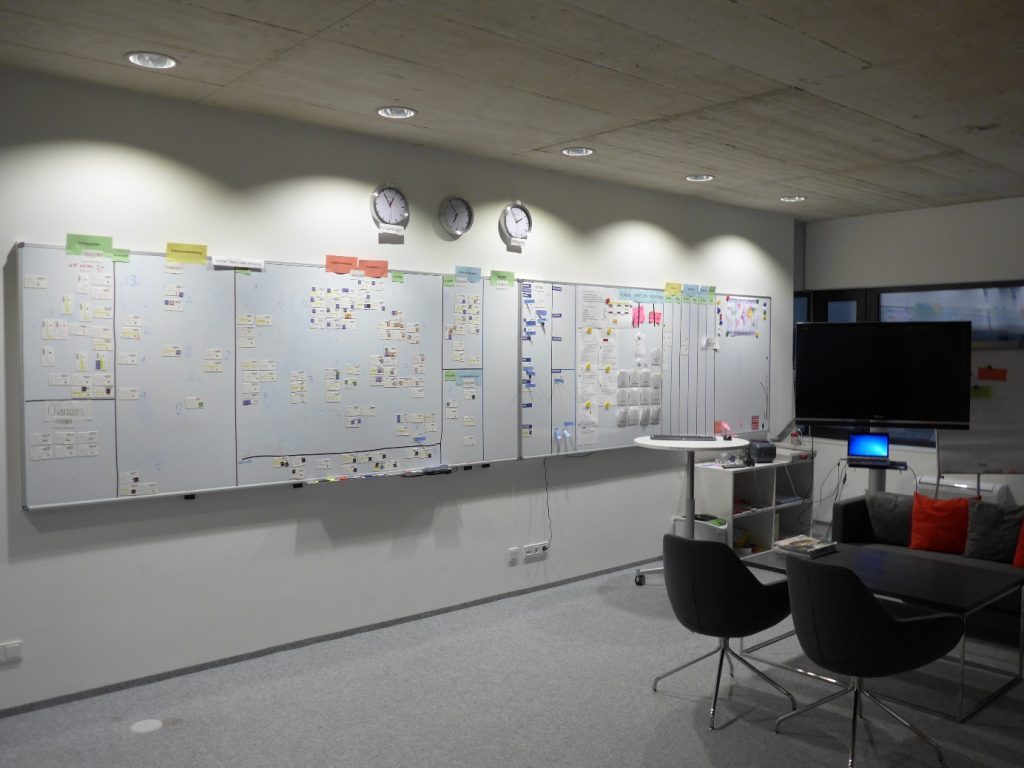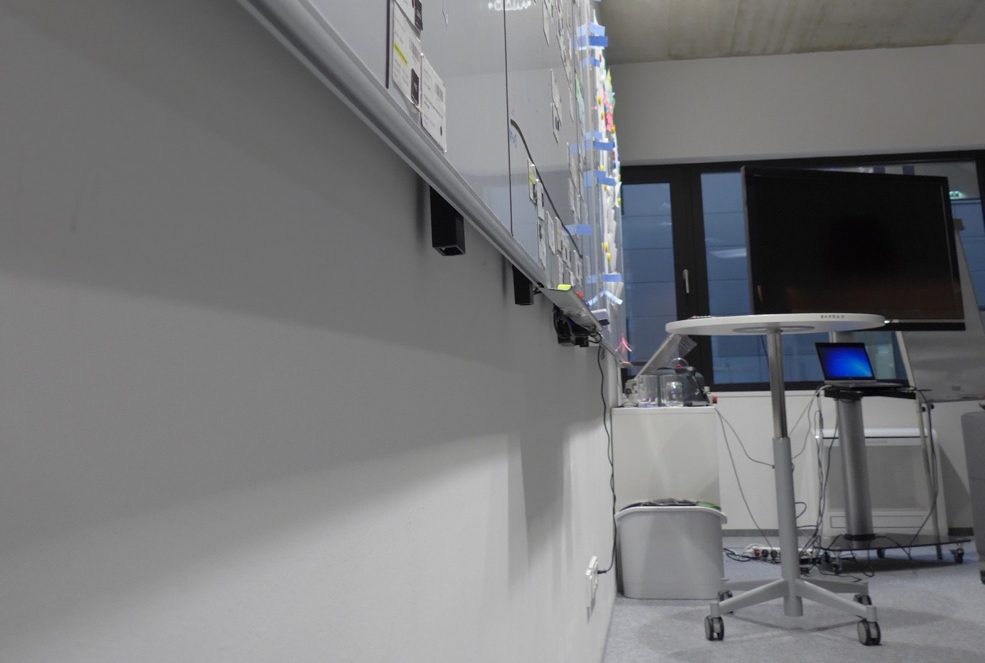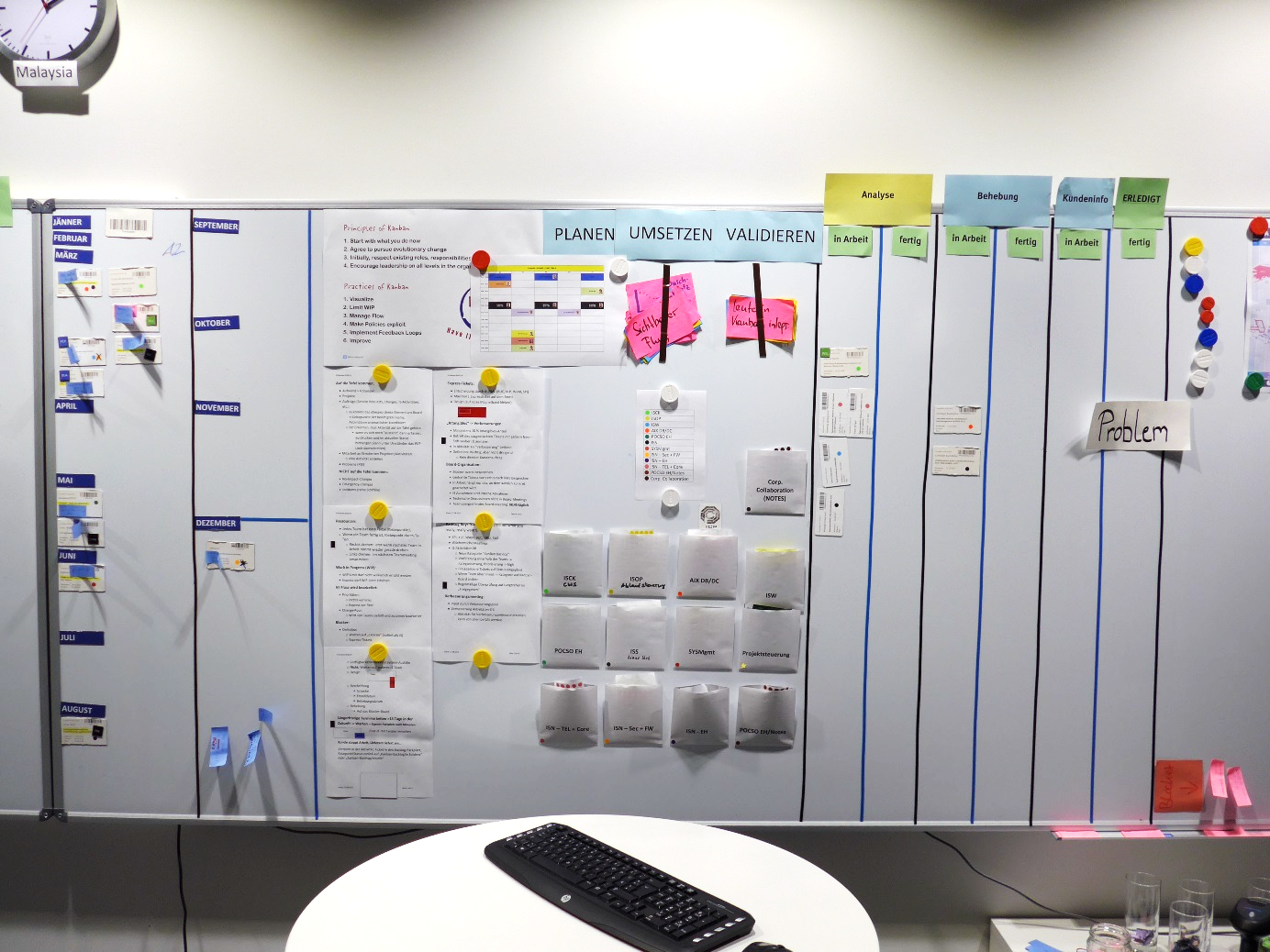
In my last article I wrote about how Kanban had improved our work at Porsche Informatik IT infrastructure. This text reflected the situation a few months after introduction – here I would like to tell you about our experiences with Kanban since then and what we have changed in the meantime.
First things first: Kanban is still being used by us! Even if no longer as it was two years ago.

This is what our board and its surroundings look like today: we have optimised Kanban for our needs in the meantime.
Improvements on the board
The beauty of Kanban is that it can be adjusted to your needs at any time. Everyday practice has shown that we don’t need three “finished” columns for the individual steps. Therefore we removed them, allowing tickets to be directly moved from “Work preparation” to “Implementation” etc. The main columns benefit from the space gained and the teams are pleased to be able to better cluster their tickets there. Currently a team is testing its own swim lane: a horizontal line reserved for that team’s tickets. We are looking forward to hearing about their experiences.
Tickets with a completion date that is further in the future end up in our ticket parking. Previously we did not have this feature, but it has proven to be a good solution. We park all tickets there that are primarily dependent on third parties – meaning that completion of the tickets is not in our hands. These long-standing tickets now, as opposed to active tickets with a blocker, no longer have any effect on the WIP limit (work in progress limit, i.e. the maximum amount of tasks being processed).
Better ticket management
Each ticket has a barcode, which is always input together with the concerned column on Fridays. This information is then synchronised with the status in order management and discussed on the following Wednesday in case of an incorrect status. These collected data allow the average time for a ticket to be determined.
When a ticket changes to another column, the status is changed immediately in order management via a barcode scan and webservice call. This minimises duplication of tickets on the board and in order management and ensures that both are always up to date.
Express tickets have proven their worth: they are handled quickly as desired. The visualisation of the urgency and cooperation across multiple teams works very well.

We have added a barcode scanner behind the board – a creative in-house solution that has made our ticket management considerably easier.
A little less conversation…
We have reduced the Kanban Dailys (our meetings) to Monday, Wednesday and Friday. A good decision, because daily discussion of blockers did not remedy them and the tickets were not dealt with any faster.
To make up for this, the Wednesday meeting is extended and it additionally focuses on long-standing tickets and the ticket parking. This includes discussion of the status of active long-standing tickets by all teams with the aid of evaluation tools on a TV screen. The focus is not on the past (“Why is the ticket not finished yet? Who is to blame?”), but who needs to do what now, to achieve progress.
The TV screen is also available to all Kanban teams for their own internal Kanban meetings. It allows the status of a ticket to be updated immediately in order management.

The improvement board has become better structured and clearer.
… a little more action!
Another pleasing development: our Kanban rules have been reduced. Since the principle is now well internalised, the initial rules are no longer necessary and have been democratically removed.
The number of teams has grown from initially eight to 13. Some larger teams have been divided and new ones have been added, which were not around when Kanban was introduced.
The WIP limits are no longer strictly defined per column and team. Each team keeps to its own defined WIP limit and there have been no negative effects to date.
Into the future with Kanban
Just like two years ago, further development remains open: time will tell how our current Kanban rules and tools will or won’t work out. Once a quarter, improvements and suggestions are discussed. The Kanban board and our rules will live and change on this basis in future too.


